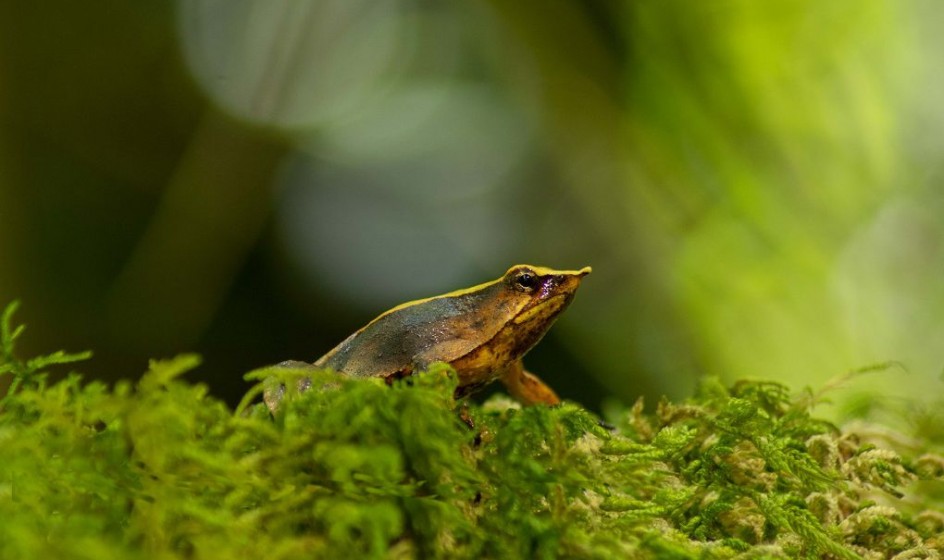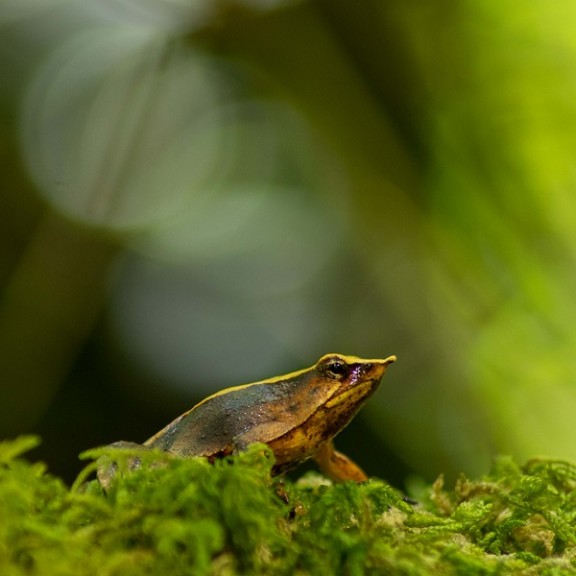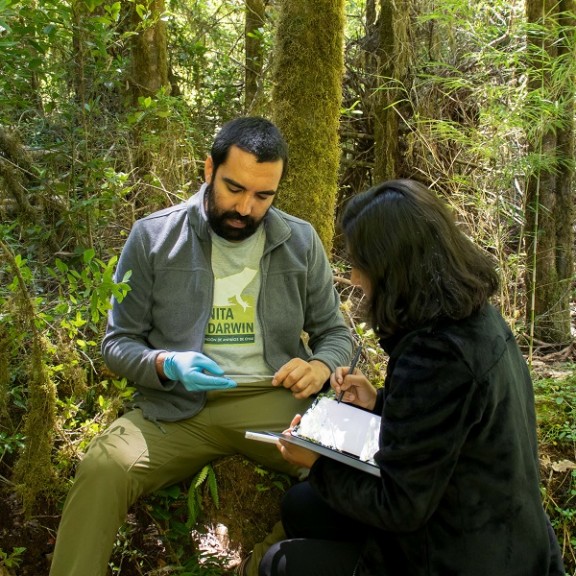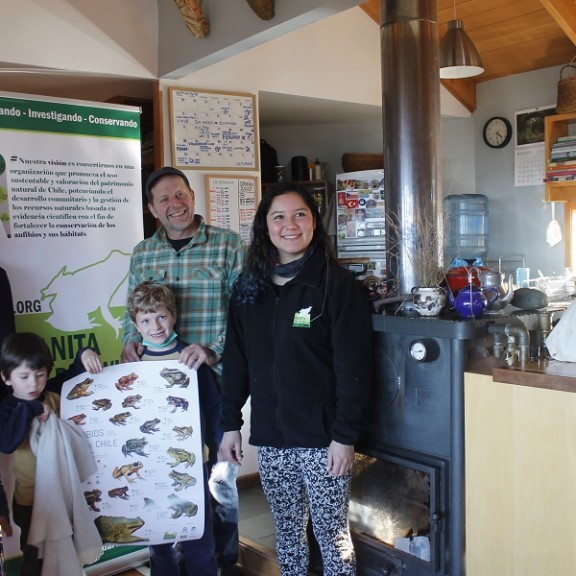

Darwin's Frogs
Project Fact Sheet
|
Species |
Darwin frogs (Rhinoderma rufum, Rhinoderma darwinii, Insuetophrynus acarpicus) |
|
Threats |
Habitat loss and chytrid fungus |
|
Project aim |
Evaluation of the effectiveness of a disease mitigation action in Darwin’s frog populations, monitoring land conservation agreements, provide management guidelines to assist landowners and awareness rising |
Darwin’s frogs as a flagship for Austral temperate forest conservation

The Chilean native forest is an area characterized by exceptionally high levels of both endemism and habitat loss. Over half of this biodiversity hotspot is represented by the Austral temperate forest, an imperilled ecosystem which holds an important number of endangered and endemic species, including amphibians such as the northern Darwin’s frog (Rhinoderma rufum), Southern Darwin’s frog (R. darwinii), and Barrio’s frog (Insuetophrynus acarpicus). This ecosystem is important for local communities, providing clean water, timber, non-wood forest products, and recreational and spiritual fulfilment. Additionally, as native vegetation and soils store abundant carbon, this ecosystem has been determined as critical for climate change mitigation strategies in Chile.
The main threat to Darwin’s frog and Barrio’s frog, as well for sympatric forest amphibians, is the loss and degradation of the Austral temperate forest. Amphibian chytridiomycosis is also an important threat to these species, incriminated in the enigmatic disappearance of the northern Darwin’s frog and the decline and extinction of several southern Darwin’s frog populations . Another important indirect threat to amphibians is the comparatively low conservation support given by the public, funding agencies, policymakers, and governmental bodies to these animals.
This project is aimed at fulfilling top-prioritized actions within the 2018-2028 Darwin’s frogs Conservation Strategy, among others to evaluate the effectiveness of a disease mitigation action in Darwin’s frog populations, monitor land conservation agreements, provide management guidelines to assist landowners and increase awareness and knowledge about amphibians and their habitats in Chile.


